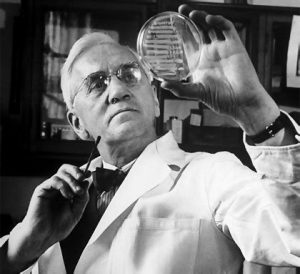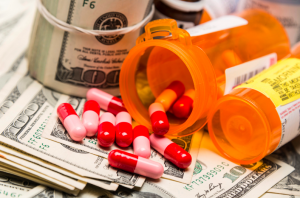The Rise of Superbugs

“Doc, I think I have a bad sinus infection, I was hoping you could prescribe some antibiotics to help clear it”. Sounds familiar? It is always a bad clinic day for any healthcare provider, when the first patient on the schedule is requesting antibiotics they probably do not need. After talking to my patient about his symptoms and performing a thorough physical exam, I carefully explain why his symptoms do not warrant a course of antibiotics. He reluctantly agrees to my plan for symptomatic management but his demeanor clearly shows disappointment at leaving my office without a prescription.
This scenario plays over multiple times in doctors’ offices around the globe and most times the ending is quite different. The patient gets to leave with an unnecessary prescription for antibiotics and the provider is guaranteed excellent patient satisfaction scores. In many parts of the world, the healthcare provider as a gatekeeper is nonexistent with patients easily self-prescribing over the counter antibiotics for a variety of ailments. The gross overuse of antibiotics is one of the main drivers for the explosive rise of pathogens with wide ranging resistance to available antibiotics – Superbugs.
The advent of drug resistant pathogens is considered to be one of the most threatening emerging global health issues affecting our generation. The current estimates are staggering, with drug resistant pathogens claiming 700,000 lives every year. This number is projected to increase to 10 million by 2050 (that’s one death every 3 seconds!), surpassing deaths from cancer. Superbugs are here to stay and we are simply not ready for them.
The Golden age of Penicillin and the Antibiotic Boom is gone

This year marked the 90thanniversary of the discovery of Penicillin by Sir Alexander Fleming, a forever milestone in antimicrobial therapy. In the 50 years that followed this discovery about 270 antibiotics were developed and approved, revolutionizing the practice of medicine and patient survival from infections. Beyond saving lives, the antibiotic age played a critical role in significant advances in the fields of medicine and surgery. Without antibiotics a majority of the surgical procedures that are performed today would not be possible or survivable due to the risk of post-surgical infections. Also the availability of effective antibiotics to prevent and treat infections has enabled the use of potent chemotherapies for cancer treatment and immunosuppressive therapies needed to preserve transplanted organs.
The boom of the antibiotic era came with a heavy cost in pervasive unregulated use and food chain contamination with the use of antibiotics in agriculture and animal farming. This era has now given way to a new age of antibiotic drug resistance and Superbugs and at the same time the development of new antibiotics is stalling. In recent years pharmaceutical companies have shifted their research priorities to more lucrative horizons, and the timing could not be much worse.
Superbugs and Big Pharma – A marriage without benefits

Given the burden of disease and mortality from Superbugs, one would think that there would be a rush by Big Pharma to develop new drugs and cash in on a problem that is affecting millions. In reality this is not happening and the past two years have been one of the worse periods for the development of new antibiotics. This summer, Novartis ended its antibacterial and antiviral research programs in order to “prioritize resources”. This followed other pharmaceutical giants like Sanofi, Astra Zeneca and Allergan who have also shifted priorities away from developing new antibiotics in recent years, shutting down their antibiotic development programs.
All of this is happening despite grave warnings by the WHO and public health specialists that “the pipeline of new antimicrobial therapies is grossly insufficient to mitigate the threat posed by drug resistant pathogens ”. A quick Google search on incurable infections reveals several alarming headlines from, “Super gonorrhea in the UK ” to “Woman dies from Superbug that resisted 26 antibiotics”. It is tempting to brush off these sensational headlines as click bait but these stories are reported with increasing frequency in the news, and should sound the alarm that Superbugs have won the last several rounds in this fight.
How did we get here?

The main reason though unpalatable, is quite simple – developing new antibiotics is not good for business. A study by the health policy center at Duke University in 2017 showed that only 5 of the 16 newly FDA approved antimicrobials between 2000-2017 were able to generate more than 100 million in sales annually. This is a huge loss for the pharmaceutical companies, which invest billions of dollars to get a new drug on the market but in the real world make no return on investment. These dismal sales are a pittance in comparison to the larger profits generated by sales of new chemotherapy or a heart failure drugs. Drugs for cancer and chronic conditions like cardiovascular diseases, diabetes and rheumatologic conditions are generally administered to patients for several months or years compared to shorter antibiotic courses of a few days to weeks. Furthermore new antibiotics hitting the market are not widely distributed to the “consumer” but instead are held in reserve for use when resistance develops to older antibiotics.
Taking these factors into consideration, it is very hard to make a convincing business case for developing new antibiotics. Simply put, a patient with an infection that is curable with the right antibiotic does not make a lucrative long-term investment for the drug developer. Some may reason that Big Pharma companies could show more altruism by putting human lives above profits. Unfortunately in an industry in which survival is driven by sales and profits, this rose-tinted view is not an argument that helps to move the conversation forward or generate meaningful solutions.
Besides the challenges we are facing with developing new antibiotics, patient attitudes and healthcare practices are also contributing significantly to the overuse of the antibiotics that we have available to fight disease. Several studies have clearly demonstrated that patient expectations drive inappropriate prescription of antibiotics even if they have a condition like the common cold for which antibiotic therapy may not be needed. From a healthcare provider’s perspective, it is more time consuming to explain to a patient that an antibiotic is not needed, than to write a prescription. Another study, showed that even when healthcare providers know that antibiotics will not improve or change patient outcomes for conditions like bronchitis and common colds, the fear of jeopardizing good relationships with patients often still leads to poor antibiotic stewardship practices and overprescribing. In an industry in which patient satisfaction makes a difference with the competition, doing the right thing may be harder if the consequence you face is losing your patients to other providers.
We are all a part of the problem, which now threatens a lot of the advances made in medicine over the past half-century. Making significant gains against this global health threat will require a concerted collaborative effort of all players involved including Big Pharma, governments, healthcare providers and patients.
Winning “the fight for our lives”

An exhibition at London’s Science Museum in 2017 on Superbugs, appropriately dubbed the issue “the fight for our lives”. This is a very apt description of what the rise and spread of superbugs and antibiotic drug resistance means for our generation. We have lost several battles in recent years but not the war, and starting now we still have the opportunity to turn things around.
For this to happen Big Pharma must be brought back to the table. With the currently flawed business model, governments will have to provide more incentives to pharmaceutical companies to help offset the costs of developing new antimicrobial agents. While awareness of the problem is increasing and discussions are happening between the main players to this end, a compromise is yet to be reached which will draw drug companies back into the business of developing new antibiotics. From the healthcare provider side of things, the growth and expansion of antibiotics stewardship programs in recent years is helping curb antibiotics overuse and guiding appropriate antibiotic selection in hospitals. Turning patient attitudes away from viewing antibiotics as the remedy for minor ailments is a lot more challenging and will take time. Healthcare providers will have to invest time in raising awareness on antibiotic resistance in their practices, but also be ready to limit overprescribing even at the cost of compromising patient satisfaction. The Superbugs are here to stay, it is up to us to heed the warning signs and fight back. Playing catch-up on this issue will not be fun and is a situation we must avoid at all cost.
Written by Boghuma. K. Titanji





